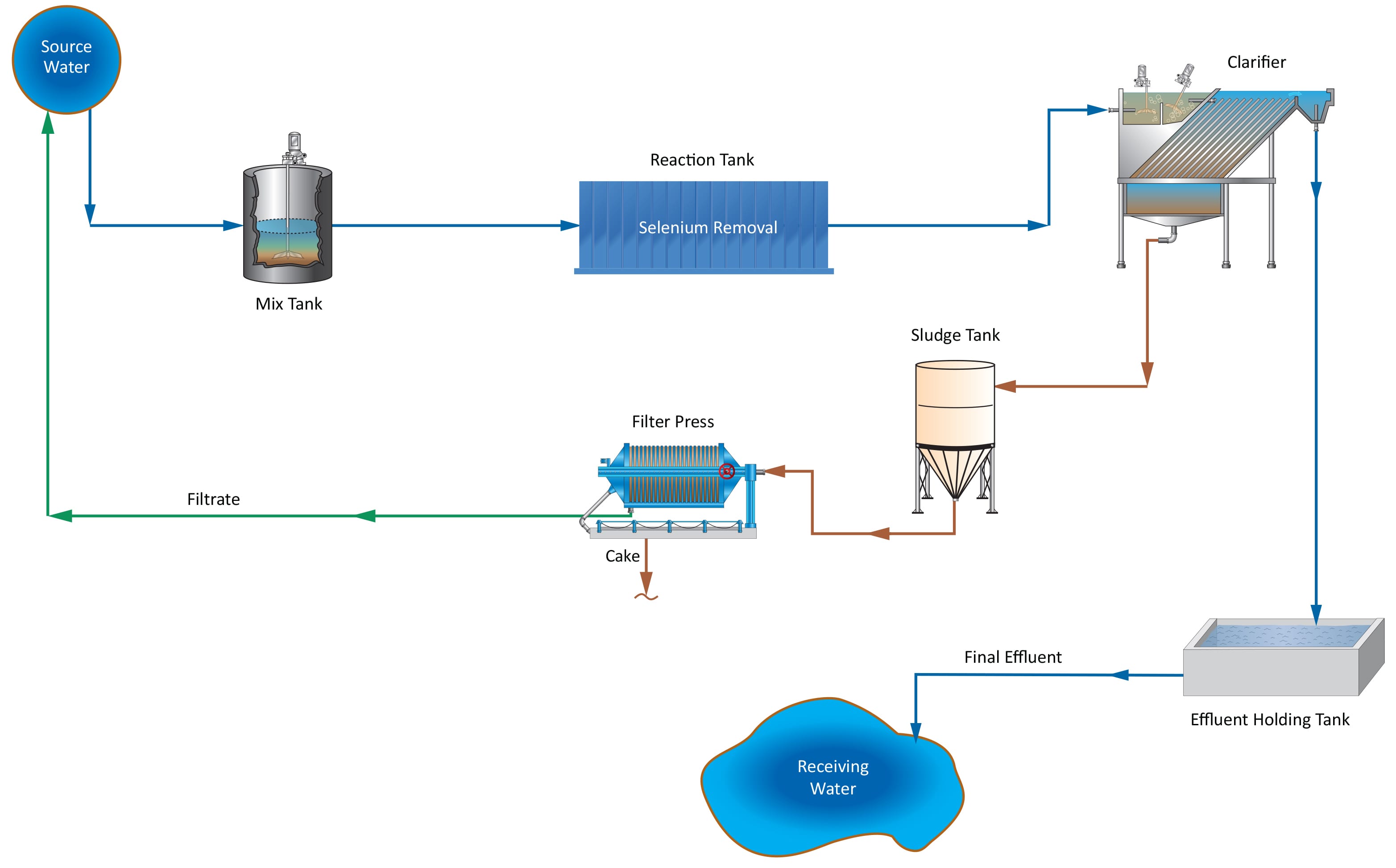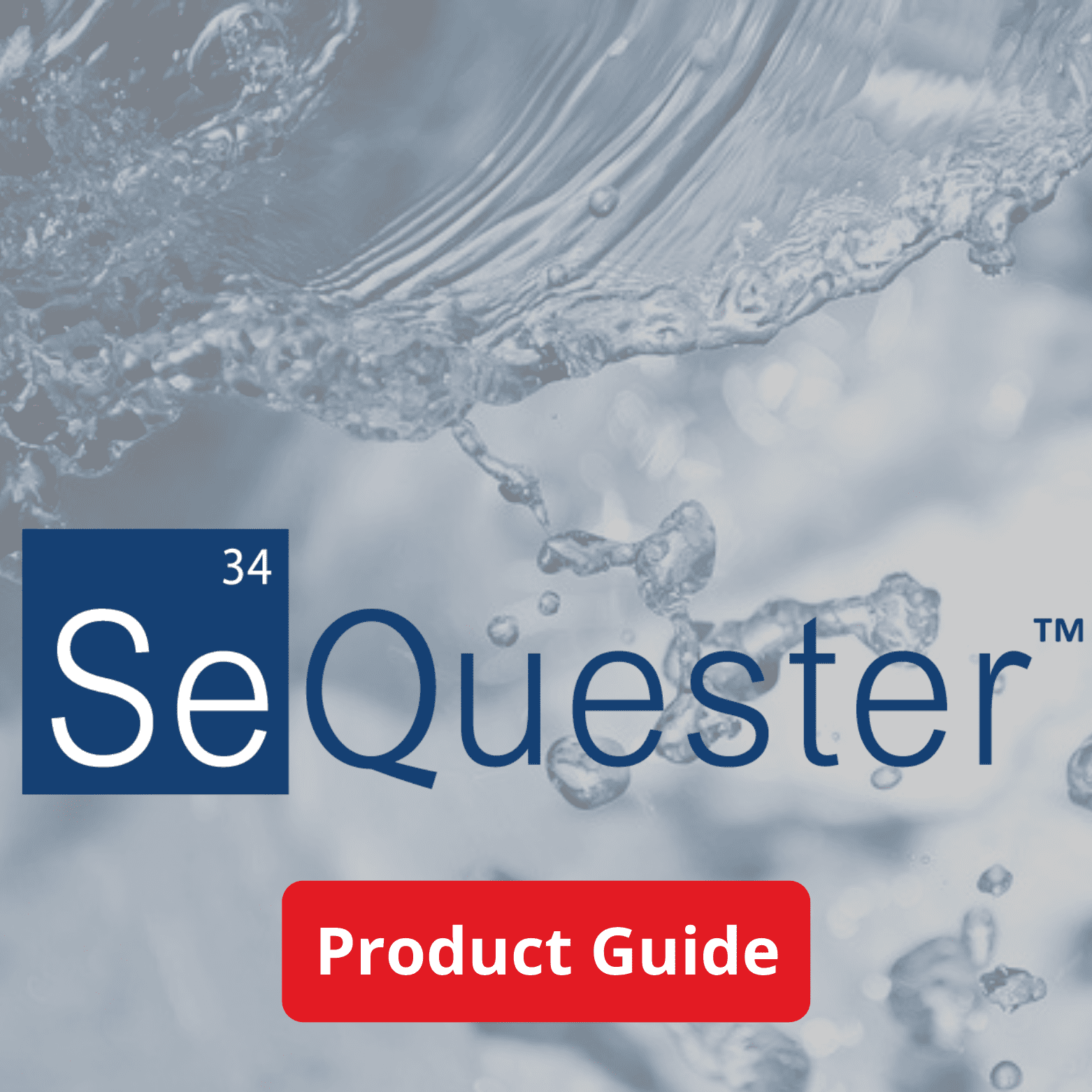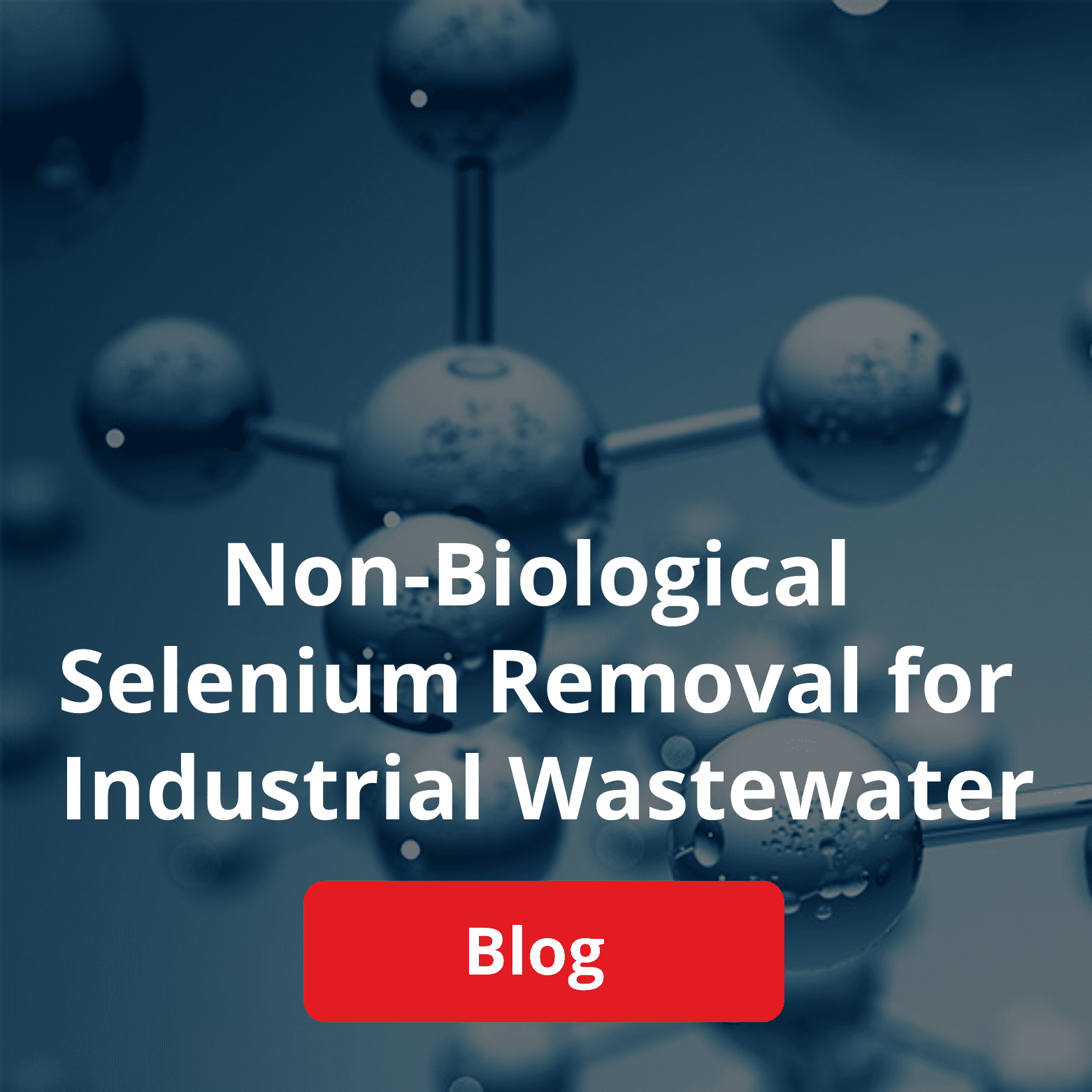What is Selenium?
Selenium is a non-metallic element toxic to humans and wildlife in high concentrations and toxic to fish in concentrations as low as 1.5 ppb. It is listed as a priority pollutant by the Environmental Protection Agency (EPA). EPA effluent limitation guidelines and National Pollutant Discharge Elimination System (NPDES) permit requirements have necessitated selenium removal for many mining, power, refining, and chemical facilities.
Current Selenium Removal Technologies
Until now, bioreactors have been the industry-standard technology for removing selenite and selenate from water to comply with discharge regulations. This bioreactor technology comes with hefty capital expenditures and requires precise control to maintain bio-populations.
Most importantly, bioreactors often struggle to remove selenium to the appropriate limit level needed to comply with EPA and NPDES permit requirements.
Introducing SeQuester®
SeQuester is a targeted physical chemical process designed to remove selenium from effluent water in industrial wastewater applications.
This innovative selenium removal technology reduces selenium concentrations via chemical and physical methods while helping avoid capital expenditures by transferring costs towards operations and maintenance. It utilizes an enhanced adsorptive matrix and process adjustments along with conventional wastewater treatment equipment such as holding tanks, clarifiers, and filter presses.
Laboratory tests and field results have shown that, not only can SeQuester effectively remove selenium, but can also remove total suspended solids (TSS) and metals such as lead, arsenic, mercury, and molybdenum from wastewater under typical industry operating parameters.
SeQuester offers the following benefits over bioreactor treatment under standard operating parameters:
- Can consistently reduce selenium below restrictive NPDES limits (<5 ppb)
- Consistently removes selenium from power, refinery, landfill, mining, storm water runoff, and other industrial process and wastewater streams, enabling facilities to meet discharge regulations
- Requires less capital investment
- Removes selenium without concern for standard upstream process operating parameters
- Can be operated in batch mode or continuously, depending on your plant’s needs.
- Can operate over a wide variety of flow rates to accommodate variations in processing requirements
Potential industry applications that may benefit from SeQuester include:
- Mine water treatment
- Ash pond remediation
- FGD wastewater treatment
- Refinery wastewater
- Groundwater remediation
- Stormwater treatment
Selenium Removal for Electrical Utilities
SeQuester can be employed to remove selenite and selenate from power plant flue gas desulfurization (FGD), ash-sluicing, ash pond, and landfill leachate wastewaters. It also reduces the concentration of other priority pollutants in these water streams under standard operating parameters.In the US, the EPA has set forth guidelines that may further restrict selenium discharge by 2028. Implementing SeQuester may allow companies to avoid capital expenditures by transferring costs towards operations and maintenance so plants can operate past that deadline and may even relieve concerns about stranded debt if a plant shutdown becomes necessary.
At cycling plants with irregular discharge, SeQuester can perform well in batch or variable flow mode to handle typical flow and chemistry variations. Operation during the day shift is possible, with no concerns about maintaining bio-populations in selenium bioreactors, which can influence other wastewater treatment processes.
SeQuester may be a treatment option for small leachate streams and other coal combustion residual runoffs, which may reduce operational costs and offer more flexibility than biofilm reactor technologies.
Interested in learning more about SeQuester?



